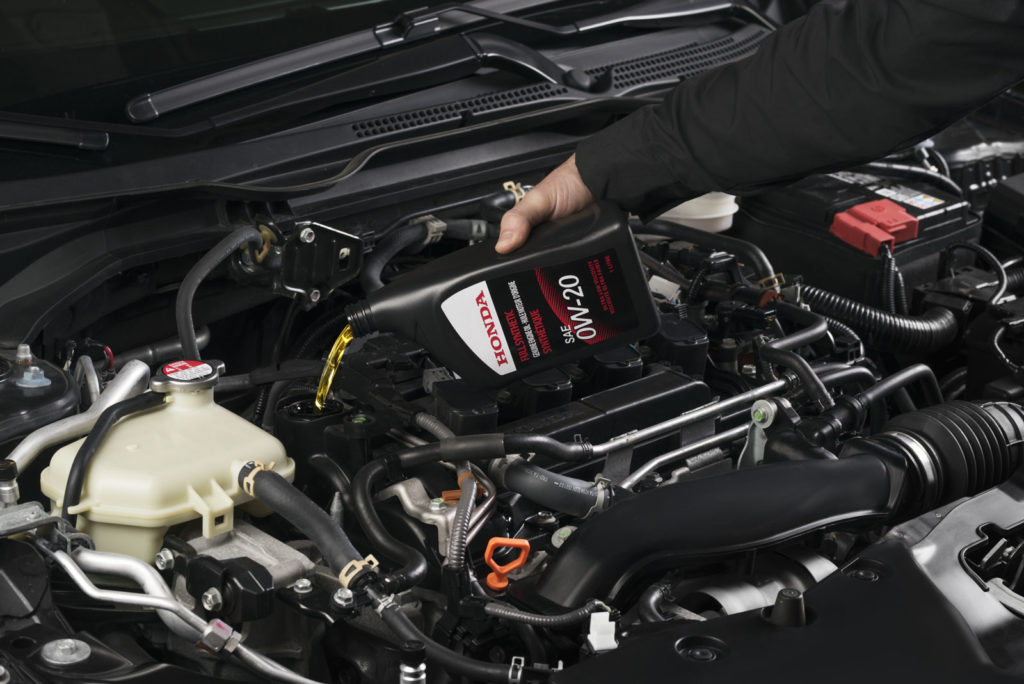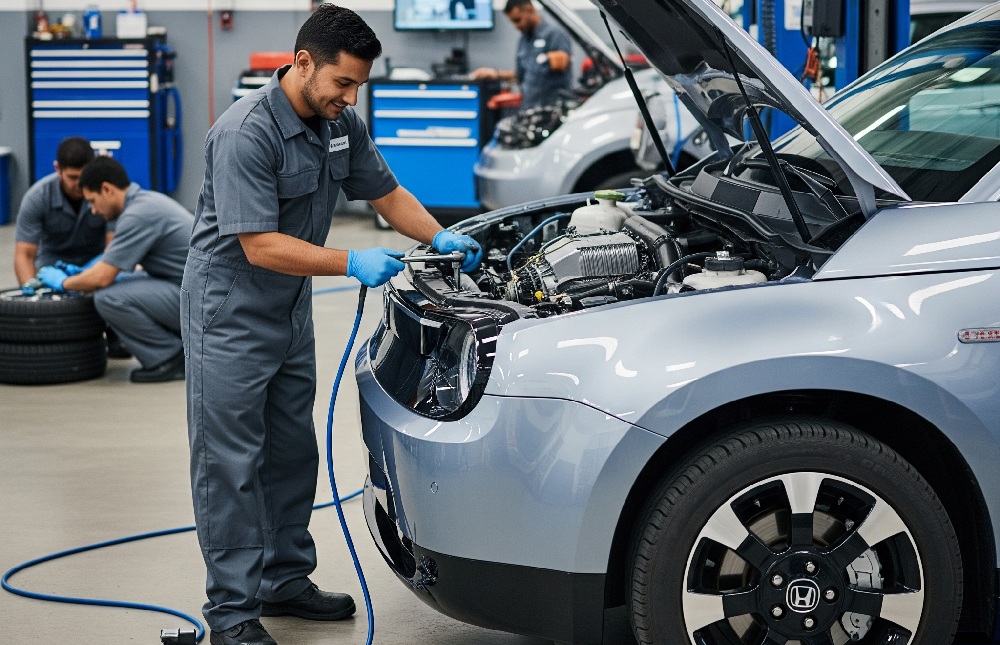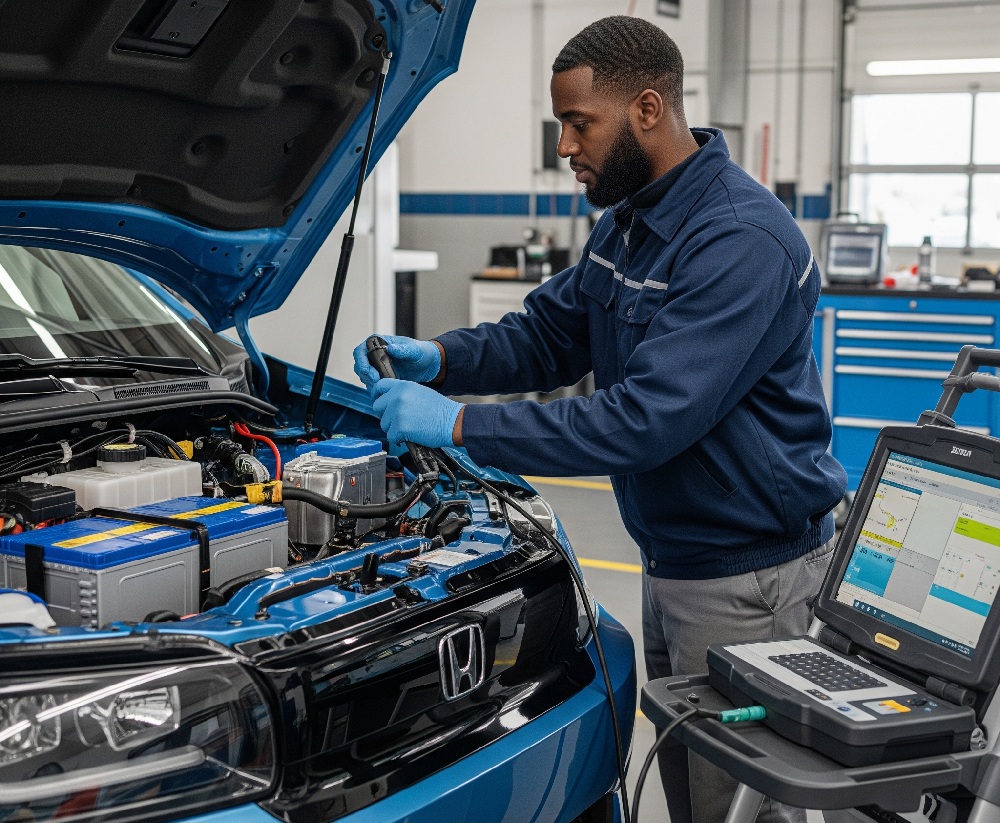Although Port Moody has many places that offer services to change your car’s oil filter, giving your car an oil change is a relatively simple process that can be done at home with a few basic tools. Here are the steps to follow:

- Gather the necessary tools and materials: Before you begin your oil change, make sure you have the following items: a new oil filter, the correct type and amount of engine oil, a wrench or socket set, an oil filter wrench (if needed), a drain pan, and gloves.
- Prepare your car: Park your car on a level surface and engage the parking brake. It is also a good idea to place wheel chocks or blocks behind the rear wheels for added safety. Allow the engine to cool down before starting the oil change process.
- Locate the oil filter: Depending on the make and model of your car, the oil filter can be located either on the top or bottom of the engine. Consult your car’s owner’s manual or do a quick online search to find the exact location of the filter.
- Drain the oil: To begin the oil change, position the drain pan beneath the oil drain plug and remove the plug using a wrench or socket set. Allow the old oil to drain completely into the pan. Once drained, replace the drain plug and tighten it securely.
- Remove the old filter: Using a filter wrench if necessary, loosen and remove the old oil filter. Be careful, as some oil may still be trapped inside the filter. Ensure that the drain pan is in place to catch any residual oil.
- Prepare the new oil filter: Before installing the new filter, apply a thin layer of clean oil to the rubber gasket on the top of the filter, which will help create a tight seal and prevent leaks.
- Install the new oil filter: Screw the new oil filter onto the mounting surface, turning it clockwise until it is hand-tight. Avoid over-tightening, as this can damage the filter or cause leaks.
- Refill with fresh oil: Locate the oil filler cap on top of the engine and remove it. Using a funnel, pour the recommended amount of clean engine oil into the engine. Refer to your car’s owner’s manual for the correct oil type and quantity.
- Check the oil level: After filling the engine with fresh oil, replace the oil filler cap and start the engine. Allow it to run for a few minutes, then turn it off and wait a few minutes for the oil to settle. Check the oil level using the dipstick and add more oil if necessary.
- Dispose of the old oil and filter: When your oil change is complete, properly dispose of the old oil and filter at a local recycling center or an authorized oil collection facility. Do not dispose of them in regular trash or pour the oil down the drain.
Following these steps and changing your car’s oil filter regularly ensures that your engine remains healthy and performs optimally.
Conclusion: The importance of regular oil filter maintenance for engine longevity
In conclusion, changing your car’s oil filter with an oil change is a critical part of engine maintenance that should not be overlooked. The filter acts as a lifeline for your engine, trapping contaminants and preventing them from circulating through the system. Regularly changing the filter removes harmful particles and ensures that only clean oil circulates through the engine, protecting vital engine components from damage.
A regular oil change offers numerous benefits, including improved fuel economy, enhanced engine performance, and increased engine longevity. By ensuring clean oil and proper lubrication, you reduce friction, prevent excessive wear, and ultimately extend the life of your engine. Additionally, promptly addressing a clogged or damaged filter can avoid costly repairs and breakdowns.
Make it a habit to check your car’s oil filter regularly and give it an oil change as needed. Consult your car’s owner’s manual for recommended intervals between filter changes. By prioritizing oil filter maintenance with an oil change, you are taking proactive measures to protect your engine’s lifeline and ensure your car performs at its best for years to come.




